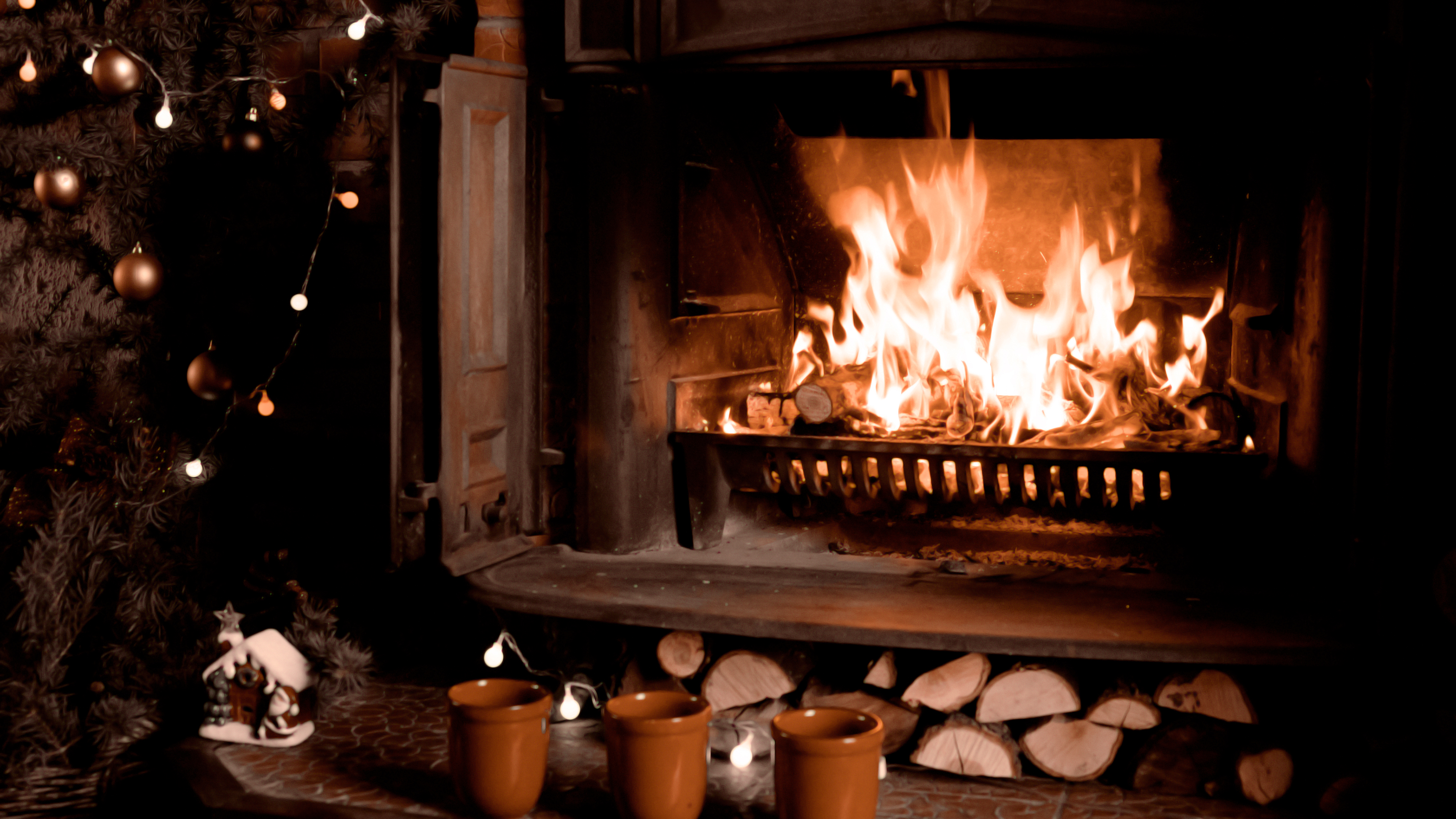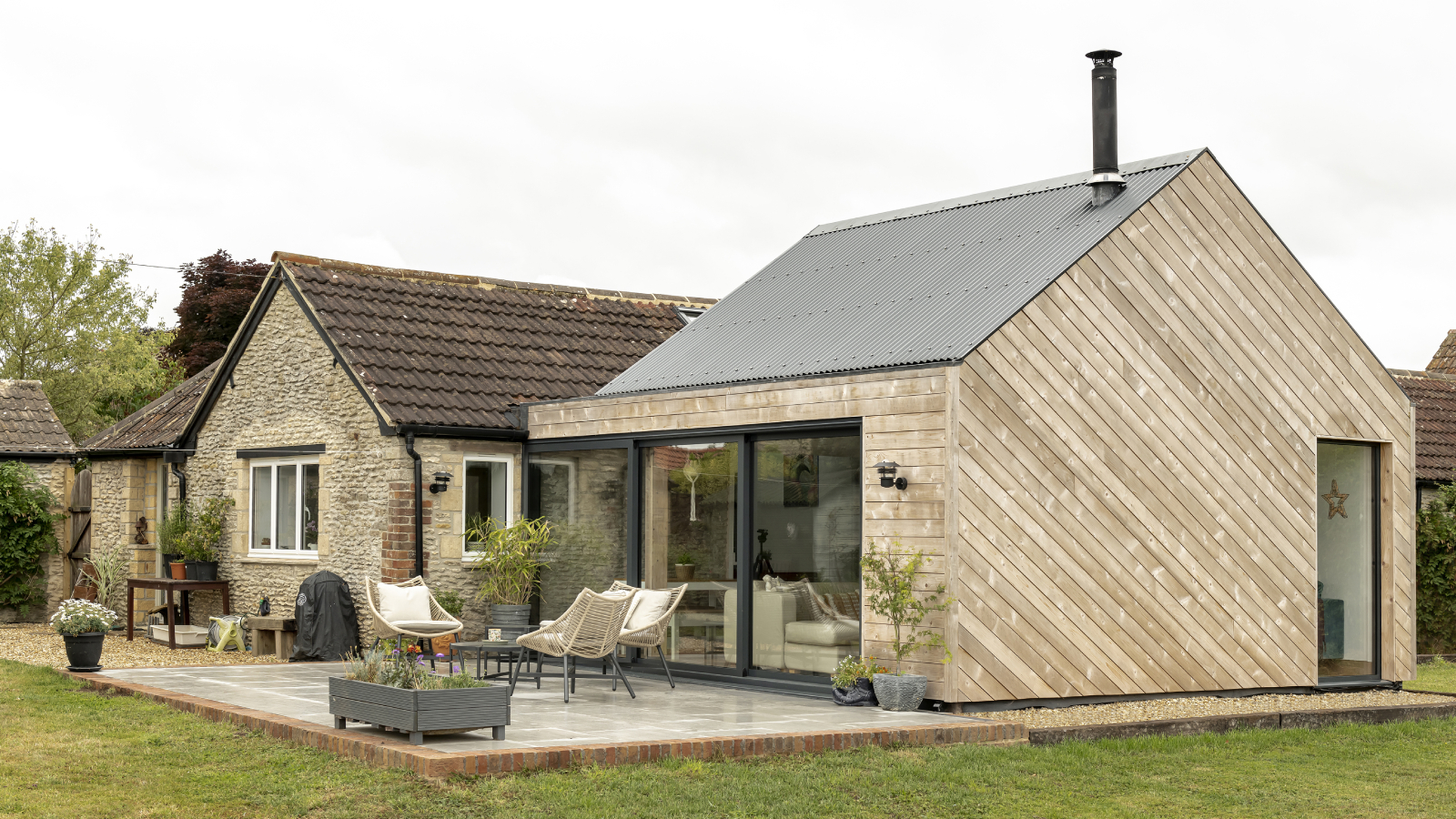How to build a fire in a fireplace and is it wrong to use newspaper?
We show you the steps to get that fire roaring and tackle a controversial question — whether or not to use newspaper?

Whether you have just fitted a new fireplace or have bought a house with one already in place, knowing how to build a fire well is vital if you want to make the very most of it.
Not only is a badly laid fire hard to light and get going, but it will also need constant attention in order to keep burning. A well set fire, on the other hand, will be easy to ignite and maintain, kicking out plenty of heat, bringing your fireplace ideas to life and making that stash of firewood you splashed out on a worthwhile investment.
Here, we explain the best ways to build a fire in a fireplace (it is a different technique to a log burning stove), as well as taking a look at some of the alternative methods you might like to try out.
What is the best way to build a fire?
In all honesty, this is a slightly controversial topic and one that can cause people to get a little hot and bothered (no pun intended). Much of this comes down to the fact that this is often knowledge that has been passed down through families and who are we to question your tried and tested family firelighting methods?
Just as when it comes to how to light a log burner, some techniques do tend to seem to work better than others and here we explain how to build a fire the traditional way.
How do you prepare your fireplace for a fire?
Before you can begin building your fire, you need to ensure that your chimney has been swept — this should be carried out at least once a year. Not only is this a safety issue, it can invalidate your household insurance if you fail to do this regularly.
You should also clear out any old ashes sitting in the fireplace. It actually doesn't hurt to leave a little bit of old ash but too much can prevent the air flow. Use a fireside dustpan or shovel and brush and consider sprinkling the the ashes round your fruit bushes or on your veg patch. Alternatively, they can be placed in your composter.
Bring your dream home to life with expert advice, how to guides and design inspiration. Sign up for our newsletter and get two free tickets to a Homebuilding & Renovating Show near you.
You are now ready to begin.
Should I use newspaper to build a fire?
There are conflicting views on this one. Some people say there is no need to use firelighters if you build the fire well with small, dry pieces of kindling and loosely crumpled balls of newspaper. Others are totally adverse to using newspaper and consider it totally unacceptable as it can create additional soot and ash, instead favouring a simple firelighter and kindling method. Meanwhile, some trailblazers recommend using a combination of newspaper, firelighters and kindling, tucking one or two firelighters into the kindling stack once it has been built.
With all the fire-starting controversy over using newspaper or not, what do the experts recommend? Here's the verdict from HETAS:
"With the use of a firelighter and a small amount of kindling, a small amount of heat will be produced to warm the flue. Firelighters can be an easier method as they burn at a steady rate, unlike newspaper which can differ depending on its state when burned."
So it's all about how you scrunch your balls. The use of firelighters can certainly make lighting the fire easier, but it is not absolutely essential, so don't panic if you find yourself without.
If you do decide to use firelighters, it's worth opting for those made from natural materials such as wood shavings or 'wood wool' where possible.
How do you build a fire the traditional way?
Before getting started, make sure you arm yourself with the right kit. You will need:
- Dry kindling
- Firewood/logs (you will need some smaller logs and others of a larger size)
- Matches (long are best) or a long-stemmed lighter such as those for lighting gas hobs
- Newspaper (not glossy paper such as that found in magazines or catalogues) and/or
- Firelighters
Step 1: Crumple up your newspaper into loose balls (anything between two to six should do it depending on the size of your firebasket or grate.)
Step 2: Use small bits of kindling to surround the newspaper. Some people like to build up a loose criss-cross type structure over the paper, while others prefer the 'tepee' method, arranging the kindling like a pyramid around the newspaper. Both are fine but leave plenty of gaps to allow the fire to 'breathe'.
At this stage, some people like to add one or two small logs on top of the kindling, while others wait to do this until the kindling is blazing. Both methods work well providing the logs you use are dry, well seasoned and not too big.
You could also tuck one or two firelighters into the kindling at this point.
Step 3: Light the paper (or firelighters) at the base of your structure, starting from the back, and concentrating on the edges of the paper balls.
Step 4: Place a fire guard in front of the fire while it gets underway — this is a stage where it is likely to crackle and spit and hot sparks can be dangerous and will damage your flooring too.
Don't leave the fire while it takes light — it is likely that if you placed a small log or two on top of the kindling, they will tumble off at some point and will need readjusting. Use fire tongs for this. You can find fireplace tools fairly cheaply online like this 5-piece set on Wayfair.
Step 5: If you didn't place logs on the kindling when setting the fire, once the kindling is burning well, place one or two small logs on it it now using tongs.
Step 6: The flames are likely to die down a little after the initial blaze and the logs should be left burning as the kindling burns away. If it seems to be struggling, blow gently on at the base, or use bellows to give your fire an oxygen boost. Alternatively, we love this blowpipe from Amazon which not only acts as stoker but also helps to target air to where the fire needs it most.
Step 7: Once the fire is burning well, add fuel gradually — not too much at once. You can start to use your larger logs when the fire is good and hot.
Finally, remember to replace the fire guard if you leave the room. Again, these are fairly inexpensive to buy and are important to stop sparks spitting out and burning your floor or someone sitting close-by.
What is the upside down method of building a fire?
This is basically the opposite of the traditional method and is actually now commonly recommended as a way of lighting a log burning stoves. The thinking behind it is that it gets the flue up to temperature more quickly meaning less need to open the stove doors to add extra logs so less chance for the combustion chamber to cool.
To carry out the upside method:
Step 1: Lay two smallish logs on the fire bed.
Step 2: Arrange kindling on top of the logs in a criss-cross or pyramid pattern. You can, if you prefer, add a couple of firelighters between the gaps.
Step 3: Open the vents of your stove fully.
Step 4: Light the firelighters and close the door.
Step 4: Adjust the vents or controls so that the fire burns more slowly once the bigger logs are burning.
Step 5: Refuel as necessary.
Natasha was Homebuilding & Renovating’s Associate Content Editor and was a member of the Homebuilding team for over two decades. In her role on Homebuilding & Renovating she imparted her knowledge on a wide range of renovation topics, from window condensation to renovating bathrooms, to removing walls and adding an extension. She continues to write for Homebuilding on these topics, and more. An experienced journalist and renovation expert, she also writes for a number of other homes titles, including Homes & Gardens and Ideal Homes. Over the years Natasha has renovated and carried out a side extension to a Victorian terrace. She is currently living in the rural Edwardian cottage she renovated and extended on a largely DIY basis, living on site for the duration of the project.

